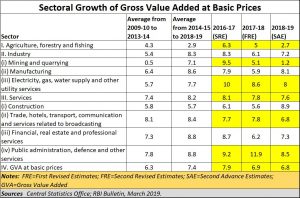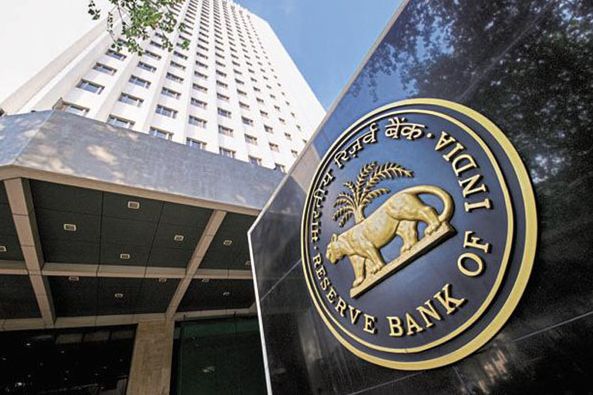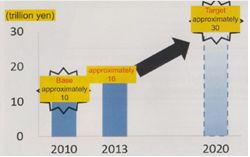https://www.freepressjournal.in/analysis/the-fire-next-time/1485655
Economic development could get derailed?
RN Bhaskar — March 20, 2019
The title has been borrowed from a 1963 non-fiction book by James Baldwin. The book contains two essays: “My Dungeon Shook — Letter to my Nephew on the One Hundredth Anniversary of Emancipation,” and “Down At The Cross — Letter from a Region of My Mind” (https://en.wikipedia.org/wiki/The_Fire_Next_Time)
The first essay, written in the form of a letter to Baldwin’s 14-year-old nephew, discusses the central role of race in American history. The second essay deals with the relations between race and religion.
 India would do well to read those two essays for two reasons. First, because it is always important to understand the tendrils that hold together race and religion. Try breaking them, and the laws of unexpected consequences begin to play out.
India would do well to read those two essays for two reasons. First, because it is always important to understand the tendrils that hold together race and religion. Try breaking them, and the laws of unexpected consequences begin to play out.
Second, because, thanks to the insensitivity of many politicians regarding the delicate relationship between race and religion, other fires have been started. They are not uncontrollable as yet. But the dark energies released could make India’s economic recovery that much more difficult.
That may not be easily visible right now, because the government appears to have fudged data time and again, so blatantly, that nobody is sure whether the numbers actually reflect economic reality any more. That could explain why as many and 108 established economists around the world wrote a white paper (https://cdn-live.theprint.in/wp-content/uploads/2019/03/1552578453615_Press-Release-14-3-2019-Economic-Statistics-in-Shambles.pdf) decrying the attempts to degrade the quality of Indian statistics.
As the paper put it, “Economic statistics are a public good. They are a vital necessity for policy-making and informed public discourse in democracies where citizens seek accountability from its government.” The government has been charged with both fudging and concealment of data. These columns have said this too (http://www.asiaconverge.com/2019/03/past-four-years-no-unemployment/)
Indian politicians have lit fires aimed at burning down the tendrils on the one hand, and the means to correct public policy on the other. If urgent attention is not paid, these fires could ravage the entire country.
In fact, despite the statistical fudging that has taken place, even the dressed-up statistics do not tell a pretty picture. Take the latest RBI Bulletin of March 2019 for instance (see chart). The most worrying number relates to agriculture, forestry and fishing. Growth rates have tumbled from 6.5% in 2016-17 to 5% in 2017-18 and are likely to sink even further to just 2.7% in 2018-19.
But wait a minute! Wasn’t this sector the one that the government had focussed on for additional inputs, farm loan waivers, insurance benefits and a whole lot of other goodies. Wasn’t this sector expected to show a major turnaround with the direct benefit transfer programmes that would take money away from middlemen and empower farmers? Then what happened? Remember how, just a few months ago, even the Nabard report (http://www.asiaconverge.com/2018/08/farmers-in-india-dont-earn-much-many-are-terribly-exploited/) showed how miserable the lot of farmers was.
Examine a bit closer, and the biggest flaw in agricultural reform was the government’s willingness to allow vigilantes in the form of gau rakshaks (cow protectors) assault and terrorise owners of cattle. Had it been only cows, that could have been overlooked. The farmers could still begin to tend to buffaloes. But when the gau rakshaks turned on buffaloes as well, and more focus was given to cattle (and not human) forensics merely to determine whether the meat was cow or buffalo flesh, that was where the distortions began (http://www.asiaconverge.com/2018/05/cattle-slaughter-ban-missteps-may-factor-bjps-electoral-woes/). The farmers lost heavily; jobs were destroyed in the beef and leather sectors too.
Overnight, the farmer who could earn Rs.20,000 per cattle-head that was not producing milk any more, saw his money disappear. It crimped his ability to purchase a new cow or buffalo. That reduced his future earnings as well. Looking after old cattle cost him additional money. So he let them on to the roads, from where they would trample over other farms, or make driving on roads more hazardous. Every which way you look, the laws of unintended consequences was at work.
Rubbing salt into this wound was the government’s announcement of doubling farmers’ incomes when it ought to have been five-fold. Instead of linking farmer revenues with the market prices (http://www.asiaconverge.com/2018/11/maharashtra-farmers-agitate-for-drought-relief-loan-waiver-and-compensation/), bureaucrats and politicians began calculating how they could give the farmer 50% more than the cost of inputs. So policymakers began fudging statistics on the cost of farming.
Over that you had demonetization which hurt farmers, powerloom workers and construction workers very hard. And yet you have a CII report (http://www.asiaconverge.com/2019/03/past-four-years-no-unemployment/) declaring that job formation was at an all-time high!
The RBI numbers are worrying indeed. Many sectors have seen 2-3 year declines in growth rates. The fire next time will not be an easy one to put out. It could scorch the very earth.





































COMMENTS